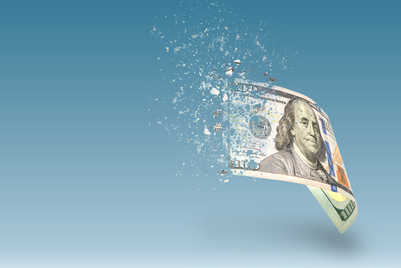
Sanjay Nazerali, global CSO of Carat Media opened the proceedings on day one at Goafest 2017. His agenda was to get the industry to ‘see things differently’.
He urged the audience to re-think as the world is changing and pushed his point through four themes.
Globalisation
“Cross border e-commerce is at around 25 billion dollars currently. That’s 10 per cent of the total e-commerce revenue worldwide. That figure is expected to grow and reach 30 per cent by 2020. So consumers are doing the exact opposite of what Donald Trump wants to do,” said Nazerali.
He added, “Globalisation isn’t dying, but the new phoenix is moving from physical goods to selling data and information. Ray-Ban’s future isn’t about selling their products, but it’s about selling a digital print because everyone will have 3D prints in the next two years. Capital intensive businesses are going to be knowledge intensive.”
The CSO also spoke about how SMEs should be the focus, as they contribute to 40 per cent of the country’s GDP currently and are growing at 12 per cent. Listed companies are growing only at 1.5 per cent in comparison.
Convergence
Nazerali listed down the following numbers – 17.8, 15.1, 13.7, 10.8 and 9.3. These numbers in descending order is the rate of profits of digital companies. With this, he put forward a question, are we losing digital?
“The truth is that digital cannot be measured by how long one spends on a screen. Convergence will become what digital does around you. India is now growing faster than the growth of digital. Screen-based digital has plateaued. Agencies have to help clients leverage digital technology. With stuff like Amazon Go, where a person doesn’t come in contact with anyone and just walks out of a store with what they require, or a wrist band stopping someone from eating more because they’ve consumed their limit, we aren’t in a world of ‘Internet of things’, but in a world of digital reality,” he said.
Data
The CSO spoke about how data is not being used in the correct manner.
He said, “Data helps the brand get closer to the consumer. A segment of one is now a reality, but why don’t consumers love such advertising? In India, ad-blockers cost publishers USD 250-300 million each year. The answer to this is that the way we are using the data is incorrect. So many creatives would say that they are limited to do things because of data. We need to look at it differently. Data is true, but it’s not ‘THE TRUTH’. Just because one can measure something doesn’t make it important, not can that devalue something that cannot be measured. Data needs specialists like doctors and designers as they speak in a different language. We need to interpret that and translate it to something as easy as Apple did with technology.”
“We are an absurd industry that has job titles like ‘data imagineer’ and the likes. But at the end of the day we do something that’s influencing the customer.”
He also put down a word of caution for those who look for sales in the short-term and stated that long-term business health should also be taken care of.
Innovation
The speaker wanted to differentiate between innovation and innovatively doing something that’s done before. “I get blown away with ad tech, gizmos and I’m blown away with it. Then I think whether that’s really innovative. We must look to innovation versus doing something innovatively.”
He ended his session by urging the audience to be lateral thinking, make mistakes and learn from them and be mad, as there’s no algorithm for n madness.


.jpg&h=334&w=500&q=100&v=20250320&c=1)
.jpg&h=334&w=500&q=100&v=20250320&c=1)


.jpg&h=334&w=500&q=100&v=20250320&c=1)

.jpg&h=334&w=500&q=100&v=20250320&c=1)


.jpg&h=334&w=500&q=100&v=20250320&c=1)




.jpg&h=268&w=401&q=100&v=20250320&c=1)
.jpg&h=268&w=401&q=100&v=20250320&c=1)


